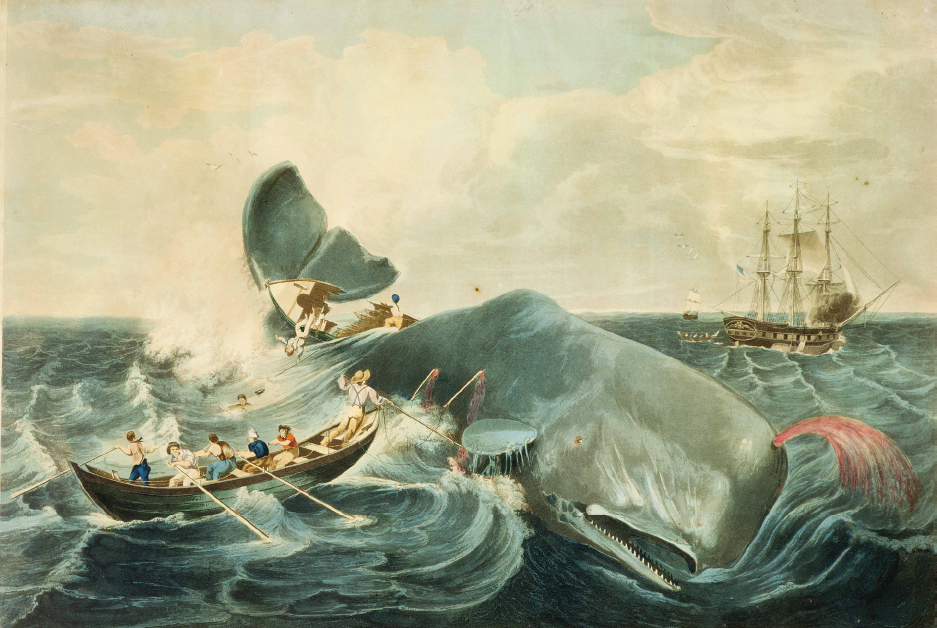
The Social Dimensions of Whaling
Whale oil fueled the lamps that illuminated the houses of well-to-do Americans in the early nineteenth century, and bright spermaceti candles made from the waxy substance in the heads of sperm whales graced their dining tables. To provide these luxuries, five hundred ships from New Bedford, Massachusetts, and the nearby island of Nantucket roamed the world on voyages lasting up to three years. Ten thousand workers — young men seeking adventure and veteran white and black sailors — manned the ships. As this painting, Capturing a Sperm Whale by William Page (1835, from a sketch by whaler C. B. Hulsart), suggests, whaling was a dangerous trade that took the lives of many men. © Peabody Essex Museum, Salem, Massachusetts, USA/The Bridgeman Art Library.